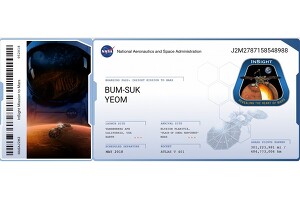2017 오리온자리 유성우 예측.
2017 Orionids prediction. 2017 Orionid meteor shower prediction.
https://t1.daumcdn.net/cfile/tistory/99AA073359DB8ACF33
오리온자리 유성우는 10월 2일부터 11월 7일까지 주로 활동하는 유성우입니다.
올해 극대기는 10월 21일 19시 54분 (한국시간)입니다. 시간당 유성수(ZHR)는 약 20개입니다.
또한 올해는 21일에 초승달이 18시 57분에 지기때문에 달이 없는 하늘에서 유성우 관측이 가능합니다.
관측 최적기는 10월 21일 저녁과 22일 새벽입니다.
cf. 오리온자리 유성우는 보통 시간당 20-25개 정도의 유성을 관측할 수 있지만, 이전 유성우 데이터 분석을 통해서 약 12년을 주기로 평상시보다 많은 유성을 볼 수 있다는 것이 알려졌습니다. 2006년에서 2009년 사이에 평상시보다 많은 유성을 볼 수 있었기때문에 12년의 주기가 맞다면 2018에서 2021년 사이에 평소보다 많은 유성을 볼 수 있을 것으로 예상됩니다. 2014년부터 2016년까지는 예상보다 유성을 많이 볼 수 없었지만 2017년은 한번 기대해도 괜찮을 것 같습니다. 올해는 달이 초저녁에 지고 없기때문에 관측 조건은 매우 좋은 편입니다.
2017 오리온자리 유성우
날짜: 10월 2일~11월 7일.
극대기: 10월 21일 19:54 (한국시간).
시간당 유성수(ZHR): 20개.
유성 속도: 66 km/s.
모혜성: 핼리 혜성.
복사점: 오리온자리 베텔게우스의 북쪽.
2017 Orionid Meteor Shower (Orionids).
Active: Oct. 2 - Nov. 7.
Peak Activity: Oct. 21 10:54 (UT).
Peak Activity Meteor Count: 20 meteors per hour.
Meteor Velocity: 66 kms per second.
Comet of Origin: 1P/Halley.
Radiant: Just to the north of constellation Orion's bright star Betelgeuse.
cf. Each return from 2006 to 2009 produced unexpectedly strong ZHRs of around 40–70 on two or three consecutive dates and were caused by meteoroids trapped in a resonance region which is not anticipated this time. A 12-year periodicity in stronger returns due to Jupiter’s influence appeared to have been partly confirmed. That suggested lower activity should have last happened from 2014–2016. If the periodicity is real, ZHRs may now slowly increase again (about 20+ in 2017). - IMO.
'Astro_News' 카테고리의 다른 글
| 12월의 슈퍼문 (Super Moon) 데이터 (0) | 2017.11.10 |
|---|---|
| Orionids ZHR Graphs for 2006-2016 10년간 오리온자리 유성우 결과 (0) | 2017.10.13 |
| Let's go to Mars (0) | 2017.10.09 |
| The return of the large sunspot (called AR2673) (0) | 2017.09.25 |
| Goodbye, Cassini (0) | 2017.09.15 |





댓글